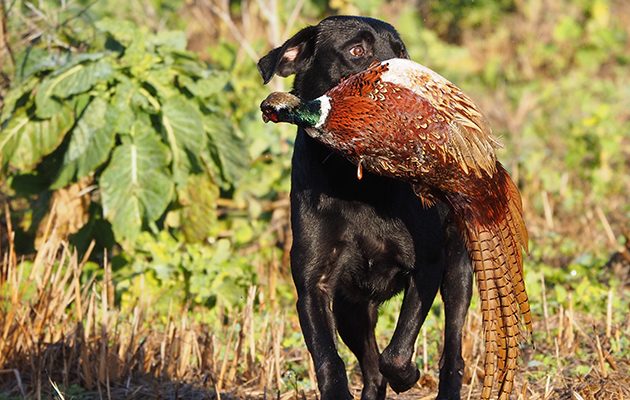Gundog working tests are seen as the poor relation of today’s immensely popular field trials, says David Tomlinson, despite being more affordable – and fairer?
Field trials have never been more popular, but they can be an expensive and frustrating process. David Tomlinson considers gundog working tests, both more affordable and fairer, and why it’s time to stop seeing them as the poor relation.
Learn how to master the retrieves that even Field Trial Champions struggle with. Read difficult retrieves: you’ve got to pick a….
GUNDOG WORKING TESTS
A few years ago one of my shooting friends made up his labrador bitch to Field Trial Champion (FTCh), a remarkable achievement for a man with just one dog and no previous experience of gundog competitions. He was justifiably proud of the achievement but also remarkably modest about it. He found that most of his shooting friends had no idea what it took to make up a FTCh, with several even unsure about the difference between a test and a trial. He also discovered that many of the triallers he met had little or no interest in shooting, despite their passion for working gundogs.
To understand trialling today one needs to look back at its history. The very first field trial with live game was held for pointers and setters in April 1865, but it was to be another 34 years before the initial spaniel trial was held on the Sutton Scarsdale estate in Derbyshire. Organised by the Sporting Spaniel Club, it was called a working trial; today we have working tests but field trials. Despite a modest entry the trial was a relative success, but there was much debate in the sporting press (most notably The Field) about what spaniels should be expected to do, with no two handlers agreeing. Judging must have been a daunting experience.
The early years of the 20th century saw retriever trials start in earnest, though they were very different affairs to those today. Usually invitation only and based around a country-house party, the competing dogs were invariably handled by professional dog men or keepers. The rewards were substantial. A trial held at Horstead Hall, Norwich, in 1906 offered a first prize of £50, with £30 to the second placed dog and £15 for third. Fifty pounds then is the equivalent of more than £5,000 today.
No one runs in modern trials for the prize money. The winner of the Retriever Championship, for example, receives a cheque for £100. Substantial sums of money can be made from the stud fees of champion dogs but most people compete because they enjoy the competition, not because they hope to get rich. My friend reckoned that making up his FTCh had cost him several thousand pounds in club memberships, entry fees, travel and accommodation.
It is claimed that early trials aimed to improve the quality of working dogs by establishing the best animals from which to breed but they also became widely held because people enjoyed the challenge of competing with their dogs. Nothing has changed. Trials have never been more popular, with both retriever and spaniel trials typically oversubscribed. It’s not unusual for a retriever trial to attract more than 100 entries and the difficulty of getting a run is usually the biggest complaint of regular competitors.
A LENGTHY AND FRUSTRATING PROCESS
Making up a FTCh is a lengthy process: dog and handler start by competing in novice trials before moving on (usually via all-aged stakes) to opens. The exact championship qualifications vary depending on the breed: for retrievers, a minimum requirement is winning at least two 24-dog open stakes under three different A-panel judges. Many dogs win one open, earning the unofficial title of FTW, but never get the elusive second win.
Trialling is a frustrating sport. The pursuit of live game, on which trialling depends, is unpredictable, so good or bad luck plays a huge role. You may well have the best dog in the trial but if it has a blank run with no game found it’s unlikely to impress the judges. Compete often enough and your talented dog will surely win one day, but you might never get sufficient opportunities for it do so.
Field trials are held exclusively on live game, which makes them expensive. Though some generous landowners still offer trialling grounds for free, field-trial associations increasingly depend on bought days on commercial shoots, recouping some of the costs by charging the guns. This has the potential for a conflict of interests if the guns are more interested in shooting than dogwork.
Despite their popularity, trials keep a very low profile, with few reports even reaching the sporting press. However, in recent years trialling has come to the attention of the Hunt Saboteurs Association, with its website declaring that: “It is sickening that large numbers of factory farmed birds are gunned down simply for dog trainers to win themselves medals.” The Kennel Club, which oversees all trials held in the UK, responded (unofficially) to the threat by introducing a subtle but important change to its rules: any club applying for a licence to run a field trial has to agree that the trial ground conforms to the Code of Good Shooting Practice. Whether many clubs do so remains a moot point.
The alternatives to field trials are working tests. These are not only much more affordable but offer equal opportunities for every dog competing, so are arguably much fairer. Most gundog handlers regard tests as a poor imitation of the real thing, echoing the Kennel Club’s view that they are, “a means to an end rather than an end itself”. However, they have the tremendous advantage of being both uncontroversial and inexpensive. There are many handlers who believe that it’s high time that they were taken more seriously. Is there any good reason why we shouldn’t have a WTCh (working test champion)?





